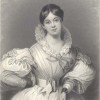
Angela Esterhammer, “1824: Improvisation, Speculation, and Identity-Construction”
Literature and cultural history of the year 1824 reflect the prominence of improvisation and speculation as ideologies and modes of action. Both these terms suggest hasty action that lacks a solid or profound basis, that responds to contingencies and constructs its own (pseudo-)reality. This article explores modalities of improvisation and speculation by focusing on the interrelated themes of ephemerality, appearance, and identity-construction in texts and performances of the year 1824, including influential works of poetry and fiction, the burgeoning periodical press, and new forms of theatrical entertainment.

Erik Simpson, “On Corinne, Or Italy”
Germaine de Staël’s Corinne, Or Italy was published in French in 1807 and was quickly translated into English. It became a touchstone for nineteenth-century conceptions of women’s creativity and the life of the woman writer, as well as an important formulation of analogies between models of artistic creation and political systems. The novel’s portrayal of Italian improvisers also helped produce the modern usage of “improvisation” and related terms in English.

Andrew Elfenbein, “On the Trials of Oscar Wilde: Myths and Realities”
This essay contradicts myths often found in popular writing about Oscar Wilde: (1) Wilde was an aristocrat; (2) Victorians knew nothing about homosexuality; (3) Wilde was put on trial for being a homosexual; (4) once Wilde was on trial, his conviction was inevitable; and (5) after the trials, Wilde disappeared. It concludes by speculating on future directions for work on Wilde and sexuality.
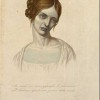
Pamela K. Gilbert, “On Cholera in Nineteenth-Century England”
This essay will focus on how the British understood and responded to the cholera epidemics that swept Britain four times from the early eighteen-thirties to the mid-eighteen-sixties, with special attention to the first epidemic and how it related to political Reform.

Sarah Winter, “On the Morant Bay Rebellion in Jamaica and the Governor Eyre-George William Gordon Controversy, 1865-70”
In the aftermath of the Morant Bay rebellion that broke out on 11 October 1865, the Governor of Jamaica, Edward John Eyre, ordered extensive and harsh reprisals against Black Jamaicans in the county of Surrey under a period of martial law lasting from 13 October to 13 November. Eyre’s actions provoked widespread controversy among intellectuals, politicians, and the general public in Britain. The Jamaica Committee was organized in December 1865 to monitor the government’s response. After a Royal Commission investigation of the rebellion and its aftermath, Eyre was removed from his post and recalled by the Colonial Office. Led by John Stuart Mill, the Jamaica Committee undertook three attempts between 1866-68 to prosecute Eyre for murder and abuse of power for his role in sanctioning the court martial and execution of George William Gordon, a former slave and Jamaican politician who was accused of fomenting the rebellion. Repeatedly, English grand juries refused to indict Eyre or convict his subordinates. The question of the constitutionality of martial law raised by the Jamaica Committee’s prosecutions implied that taking sides for or against Eyre’s actions was fundamentally an expression of political views about the legal limitations on the use of force in imperial governance. Defending the importance of the constitutional principles at stake in the Jamaica Committee’s unsuccessful prosecutions of Eyre, Mill articulated the duty to uphold the rule of law as a fundamental principle of modern citizenship. The question of the extent of Gordon’s rights as a “fellow-citizen” within the British Empire, however, remained unresolved.
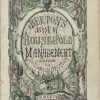
Susan Zlotnick, “On the Publication of Isabella Beeton’s Book of Household Management, 1861″
This essay examines Isabella Beeton’s Book of Household Management, which has been called “the most famous English cookery book ever published.” It contends that Beeton’s work shares the same concerns as the nineteenth-century realist novel, and that The Book of Household Management captures the contradictions, anxieties, aspirations and fantasies of middle-class domesticity and thereby offers a vision of family life that is novelistic in its complexity. Specifically, the essay focuses on Beeton’s representation of the middle-class housewife as a domestic manager responsible for maintaining the family’s class identity by creating a “tasteful” lifestyle. In doing so, it concludes that the line from the Victorian Mrs. Beeton to the Martha Stewarts of our own day is a fairly direct one.

Margaretta S. Frederick, “On Frederic Shields’ Chapel of the Ascension, 1887-1910”
On 26 February 1911, the Pre-Raphaelite artist Frederic Shields (born 1833) died, having spent the last twenty years of his life devoted to the decoration of the Chapel of the Ascension in Bayswater, London. Conceived of in 1887, completed in 1910, bombed in 1944 during the Blitz of World War II and demolished in 1969, the Chapel represents changing Victorian precepts of religion and faith as well as attitudes towards public art and decoration on the eve of the modern age. Designed by the architect and aesthete Herbert Horne (1864-¬1916) and modeled on thirteenth-century northern Italian church architecture, the chapel design was a reflection of the British rediscovery of the Italian Renaissance during the Victorian period. Shields’ use of the marouflage technique, mimicking continental fresco schemes, reflects a national desire to raise public British art to a level of “high art,” which would ensure it a place in the art historical canon.
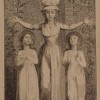
Ghislaine McDayter, “On the Publication of William Godwin’s Memoirs of the Author of A Vindication of the Rights of Woman, 1798″
William Godwin’s publication of Mary Wollstonecraft’s memoirs in 1798 had a massive impact on Wollstonecraft’s posthumous reputation and literary legacy. While Godwin’s refusal to finesse an increasingly conservative readership by downplaying his wife’s sexual independence in the Memoirs may have initiated a violent rejection of Wollstonecraft’s work for nearly a century, it also highlighted the important political radicalism of her work that might otherwise have been forgotten.

Elsie B. Michie, “On the Sacramental Test Act, the Catholic Relief Act, the Slavery Abolition Act, and the Factory Act”
Examining two sets of intertwined Parliamentary Acts that went into effect before and after the Reform Act of 1832, this entry argues that they make visible the gestures that led up to and resulted from reform.
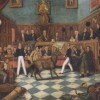
Ivan Kreilkamp, “The Ass Got a Verdict: Martin’s Act and the Founding of the Society for the Prevention of Cruelty to Animals, 1822”
This article presents the history and pre-history of Martin’s Act (1822), “Act to prevent the cruel and improper treatment of Cattle,” and the subsequent founding, in 1824, of the Society for the Prevention of Cruelty to Animals (after 1840, the Royal Society for the Prevention of Cruelty to Animals). It explains and analyzes the late-eighteenth-century and early-nineteenth-century context in which the animal welfare or anti-cruelty movement emerged. It also discusses the failed 1809 Act proposed by Lord Erskine and Richard Martin’s successful 1822 Act, and analyzes the particular role played by ridicule and shifting boundaries of humor in the discourse surrounding human treatment of animals.
